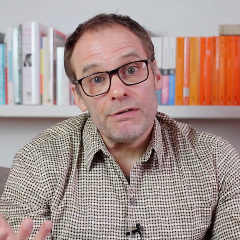You are not currently logged in. Please create an account or log in to view the full course.
Introduction: What is Modernity?
- About
- Transcript
- Cite
Modernity and Postmodernity
In this course, Dr Ross Abbinnett (University of Birmingham) explores notions of modernity and postmodernity in sociological theory. In the first lecture, we consider the meaning of modernity and its characteristics. In the second lecture, we look at Jean-François Lyotard’s writing on the postmodern condition, in which common understandings of the world are fractured and society is disunited. In the third lecture, we look at Jean Baudrillard’s work on the mass media, and his ideas of simulation and hyperreality as features of postmodernity. Next, we think about Jacques Derrida’s method of deconstruction. In the fifth and final lecture, we look at how these ideas might be relevant to contemporary society.
Introduction: What is Modernity?
In this lecture, we think about the meaning of the term “modernity”, focusing in particular on: (i) feudalism, the period which preceded modernity, and its characteristics, especially its cyclical nature, its social hierarchy, and its basis in a religious worldview; (ii) the transition to modernity through capitalism and the Enlightenment, and the shift from cyclical to dynamic forms of production; (iii) some of the key features of modernity, such as its emphasis on individualism and innovation over tradition, its new understanding of time as being progressive rather than cyclical, and Max Weber’s notion of disenchantment.
Cite this Lecture
APA style
Abbinnett, R. (2021, August 24). Modernity and Postmodernity - Introduction: What is Modernity? [Video]. MASSOLIT. https://massolit.io/courses/modernity-and-postmodernity/introduction-what-is-modernity
MLA style
Abbinnett, R. "Modernity and Postmodernity – Introduction: What is Modernity?." MASSOLIT, uploaded by MASSOLIT, 24 Aug 2021, https://massolit.io/courses/modernity-and-postmodernity/introduction-what-is-modernity

